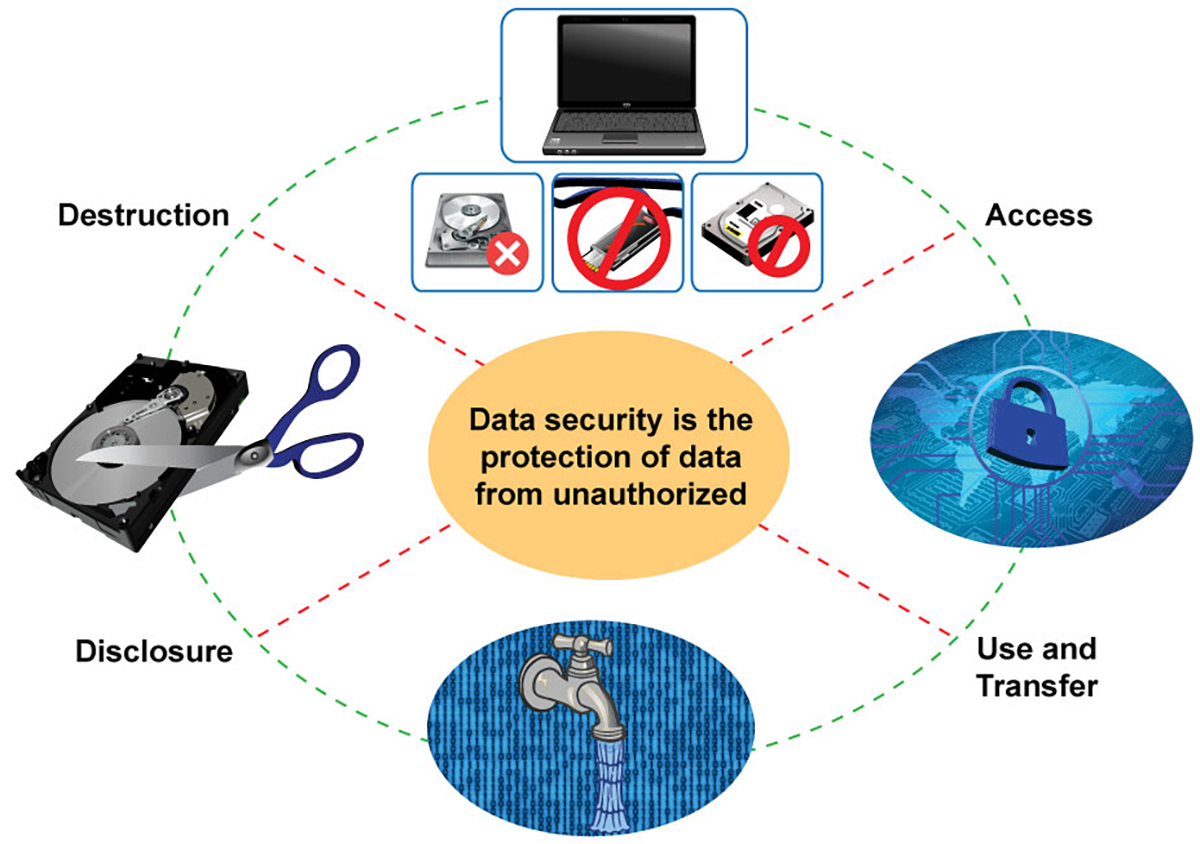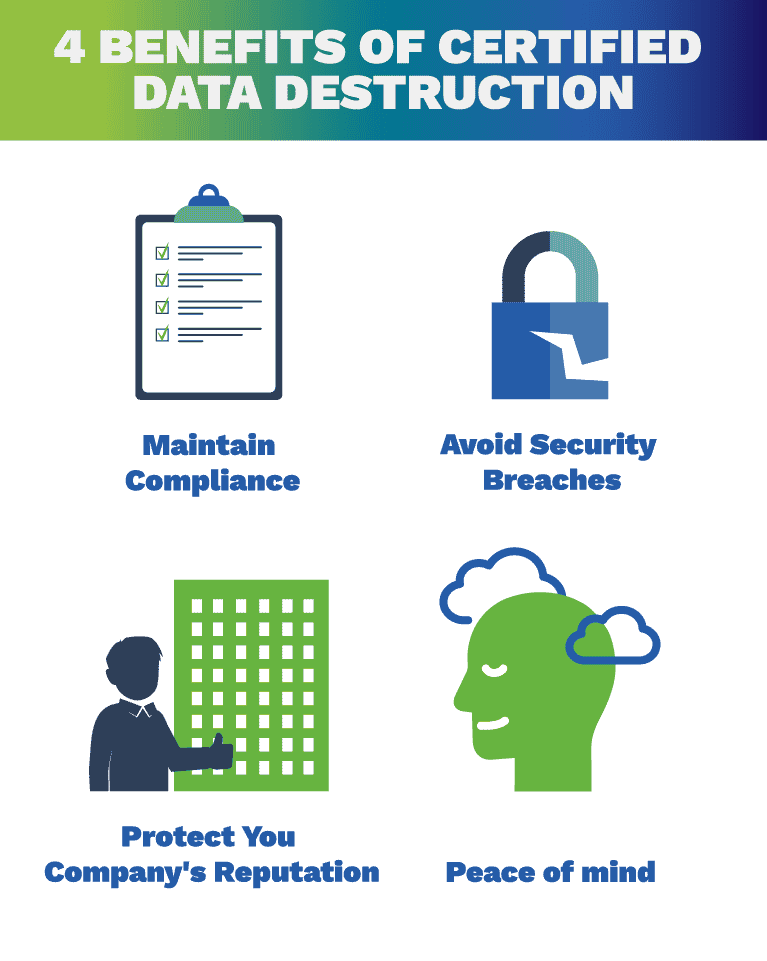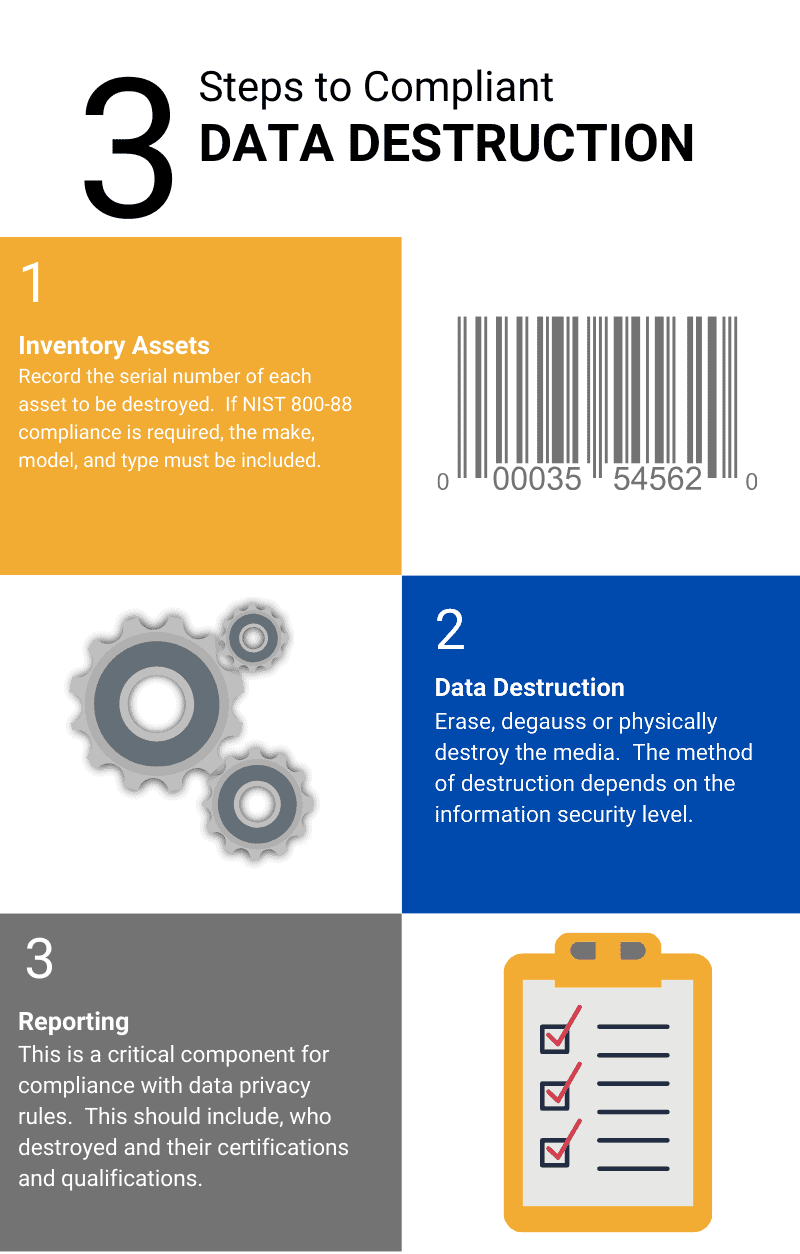Why Data Destruction is a Vital Component of Comprehensive Cyber Security
Why Data Destruction is a Vital Component of Comprehensive Cyber Security
Blog Article
The Significance of Effective Data Damage Practices in Safeguarding Sensitive Details and Ensuring Computer Safety And Security
In an era where information breaches are significantly usual, the importance of reliable data damage practices can not be overstated. Carrying out robust data devastation techniques not only alleviates these risks but also straightens with legal conformity requirements, guaranteeing that organizations support their reputation and foster client count on.
Recognizing Information Damage
Recognizing data devastation is crucial in today's electronic landscape, where delicate details can easily be compromised. Reliable data destruction entails not merely removing data however making sure that data is irretrievable via extensive approaches. This process is crucial for organizations that take care of personal client information, copyright, or inner documents, as any kind of breach can result in extreme economic and reputational effects.
Information destruction includes numerous strategies, consisting of shredding physical media, degaussing magnetic storage tools, and using software-based services that overwrite data numerous times. Each technique serves a details function and needs to align with the level of sensitivity of the info being taken care of. Physical damage is usually liked for difficult drives containing highly private information, while software application approaches might be sufficient for less sensitive details.
Furthermore, sticking to market requirements and laws, such as the General Data Protection Regulation (GDPR) or the Medical Insurance Portability and Liability Act (HIPAA), is vital for conformity and to reduce legal threats. Organizations must create a robust information destruction plan, train staff members on ideal techniques, and routinely investigate their treatments to ensure that all sensitive details is thrown away firmly and efficiently.
Risks of Inadequate Practices
Insufficient data damage techniques reveal organizations to substantial dangers that can have far-ranging consequences. When sensitive details is not appropriately dealt with, it stays vulnerable to unauthorized gain access to, which can cause data violations and identification theft. Such cases not only compromise the safety of individuals however likewise tarnish the company's track record, leading to a loss of client depend on and prospective financial effects.
In addition, regulatory conformity is increasingly rigid in numerous sectors. Failure to abide by information damage policies can cause substantial fines and lawsuits versus organizations. These penalties can strain funds and divert attention from core company operations.
Additionally, the misuse of recurring information can bring about intellectual building theft or business reconnaissance, jeopardizing competitive benefits (data destruction). The influence of poor information destruction prolongs past prompt monetary losses; it can also result in long-lasting damages to brand honesty and market position

Organizations must identify that information protection is not only concerning protecting against violations; it likewise incorporates the liable management of information throughout its lifecycle. Ignoring reliable information devastation methods can have tragic effects, underscoring the need for robust steps to minimize these dangers.
Finest Practices for Data Damage
Implementing reliable information damage methods is necessary for safeguarding delicate information and preserving conformity with governing standards. Organizations should embrace a multi-faceted strategy to make certain that information is irretrievable, therefore preventing unauthorized accessibility and potential breaches.
First, data must be categorized based upon sensitivity, enabling organizations to use ideal devastation try this methods tailored to the level of threat. For electronic data, making use of software-based data-wiping tools that abide by market standards can effectively overwrite existing data. Physical destruction techniques, such as shredding or degaussing, are essential for devices that store delicate details, making certain complete eradication.
Developing a clear information retention plan is crucial, detailing the length of time different kinds of info ought to be preserved before devastation. Routine audits of information storage systems are also essential to determine out-of-date or unneeded information needing elimination.
Furthermore, training staff members on the significance of information damage and the details procedures to follow fosters a culture of safety and security within the company. Preserving documentation of information destruction refines gives accountability and sustains conformity read here with outside policies and interior plans. By sticking to these finest methods, organizations can substantially mitigate the dangers related to data exposure.
Legal and Compliance Factors To Consider

Failing to adhere to these guidelines can result in severe fines, including substantial penalties and reputational damage. Organizations needs to carry out a robust information devastation policy that aligns with these legal structures and supplies clear guidelines on the proper approaches of information disposal, whether physical shredding or electronic wiping.
Furthermore, preserving documentation Learn More of information destruction activities is crucial for showing conformity during audits or assessments. By prioritizing lawful and conformity factors to consider, organizations can improve their data safety and security stance and foster trust with customers and stakeholders, eventually adding to a more secure information administration environment.
Benefits of Effective Information Damage
Effective information damage techniques expand beyond plain compliance; they supply substantial advantages to organizations that prioritize them. By making certain that sensitive information is irretrievably destroyed, organizations minimize the threat of data violations and the prospective economic consequences related to them. This proactive approach not just safeguards versus unapproved gain access to yet likewise enhances the general reliability of the organization in the eyes of clients and stakeholders.
Applying durable information devastation approaches, such as physical damage of storage gadgets or advanced information wiping strategies, adds to the fortifying of a company's cybersecurity posture. data destruction. It minimizes the chance of intellectual residential or commercial property burglary and safeguards proprietary information, therefore maintaining a competitive edge in the marketplace

Verdict
In conclusion, reliable data damage practices are crucial for guarding sensitive details and enhancing general computer system safety and security. Inevitably, a commitment to durable information devastation strategies promotes a society of duty, therefore reinforcing a company's cybersecurity posture and maintaining customer trust.

Report this page